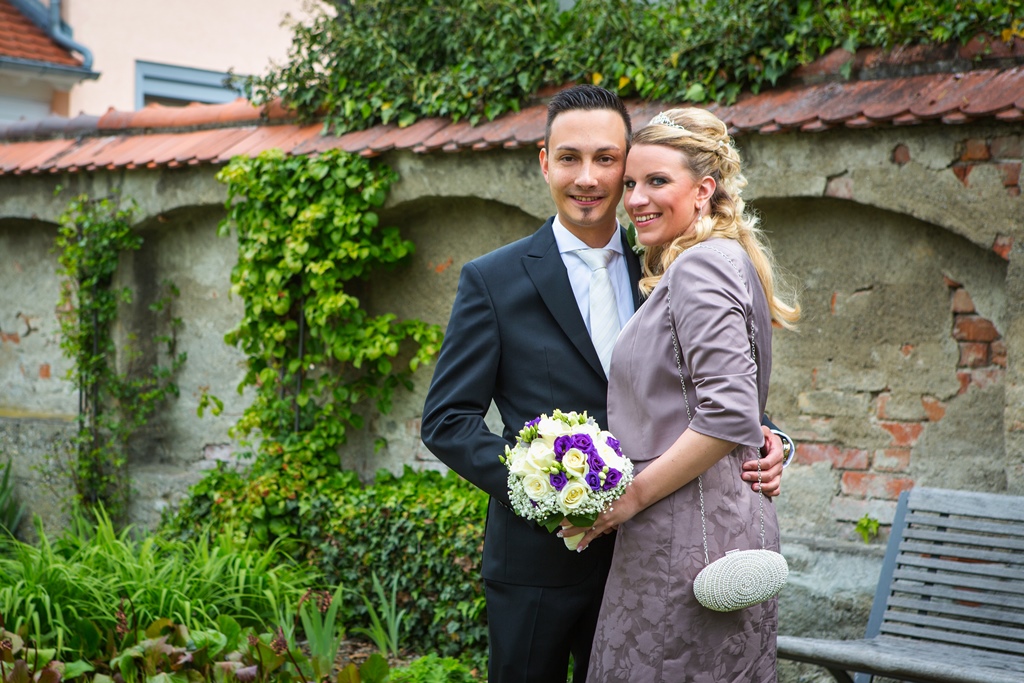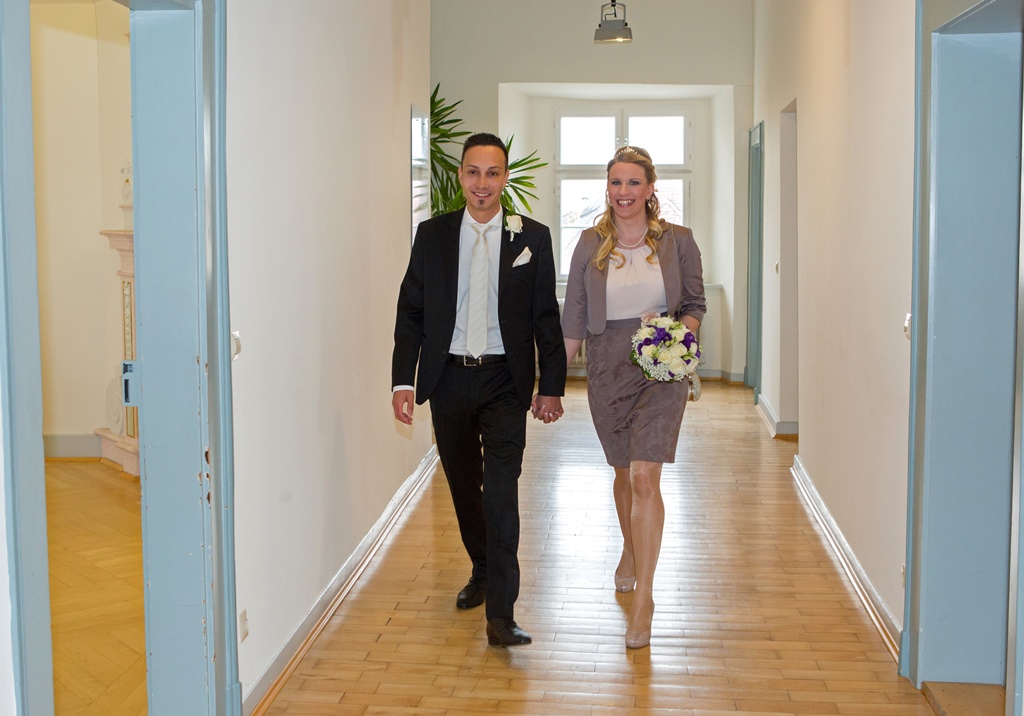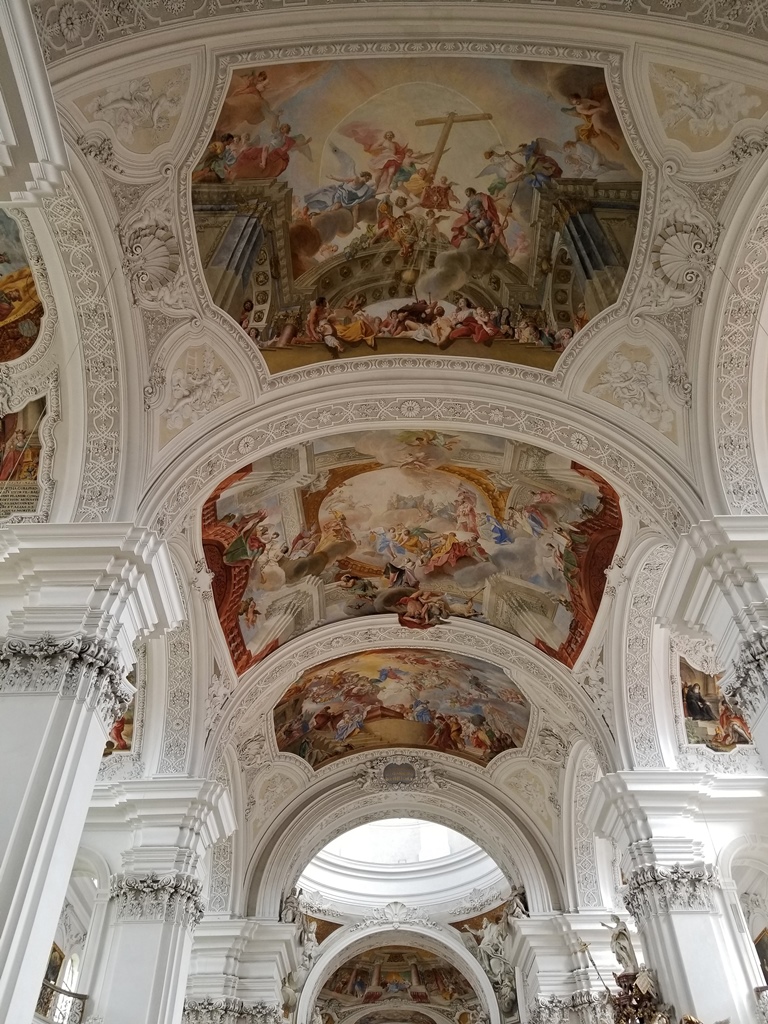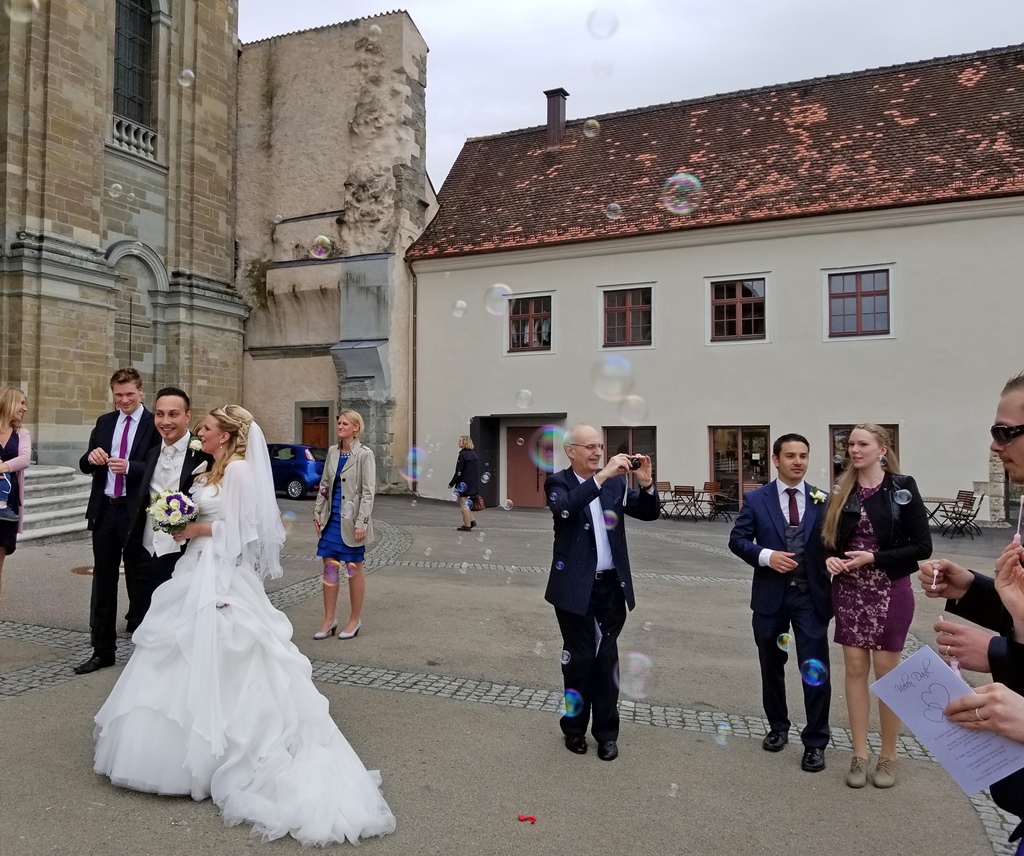A more accurate title for this page might be “The Wedding of Rainer and Anita”, but as
this website is more about places than events, I’ve entitled it for the starring venue
for the day, Weingarten’s Basilica of St. Martin (or Sts. Martin and Oswald, to be
precise). The Basilica is unquestionably Weingarten’s top attraction, and I’ll get to
it, but the day was a busy one, spent at a series of venues, and the first was a
Weingarten building called the Schlössle.
The Schlössle (“little palace”) is one of the city’s oldest buildings, first built around
1550 as the administrative seat of the imperial bailiwick of Swabia. Given the date, it
shouldn’t be too surprising that it was built in Renaissance style. In the 18th Century,
the building was redone in baroque style (with some beautiful stucco work by Franz
Schmuzer) and became the residence of the imperial district judges. In the 19th and
20th Centuries, the building served as a residence for several officers, and in 2001 it
became a museum of the city (the Stadtmuseum im Schlössle).
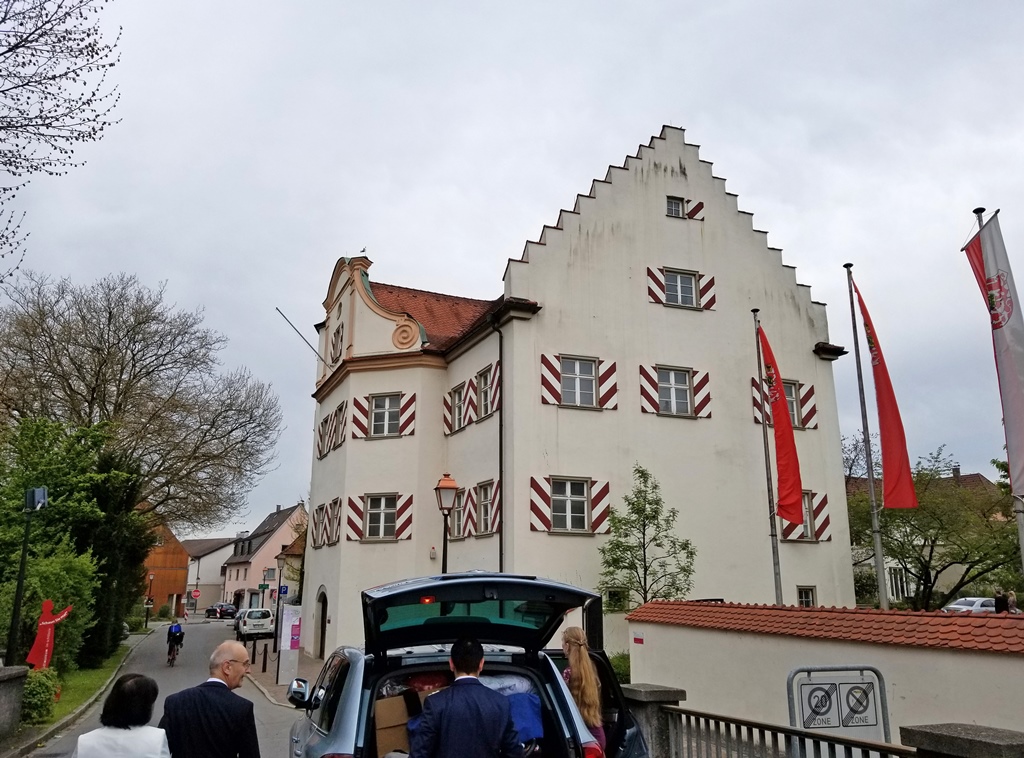
Stadtmuseum im Schlössle
The upstairs floor in the Schlössle has rooms that are sometimes used for temporary
exhibitions, and at other times are used for other purposes. Our purpose in visiting
the Schlössle was to use one of these rooms for a sort of civil marriage ceremony, which
would involve a local official and the signing of papers. This would be a small
ceremony, with only family and some close friends in attendance. And a photographer,
who took some pictures of the happy couple prior to, during and after the ceremony.
Starting with some in the courtyard behind the building.
Rainer and Anita
The guests gathered in the courtyard, and at the appointed time we made our way upstairs
for the ceremony. In addition to the procedures, the official offered advice (I think – it
was all in German, this being Germany), and there was an exchange of rings. And applause,
of course.
Rainer and Anita in Hallway
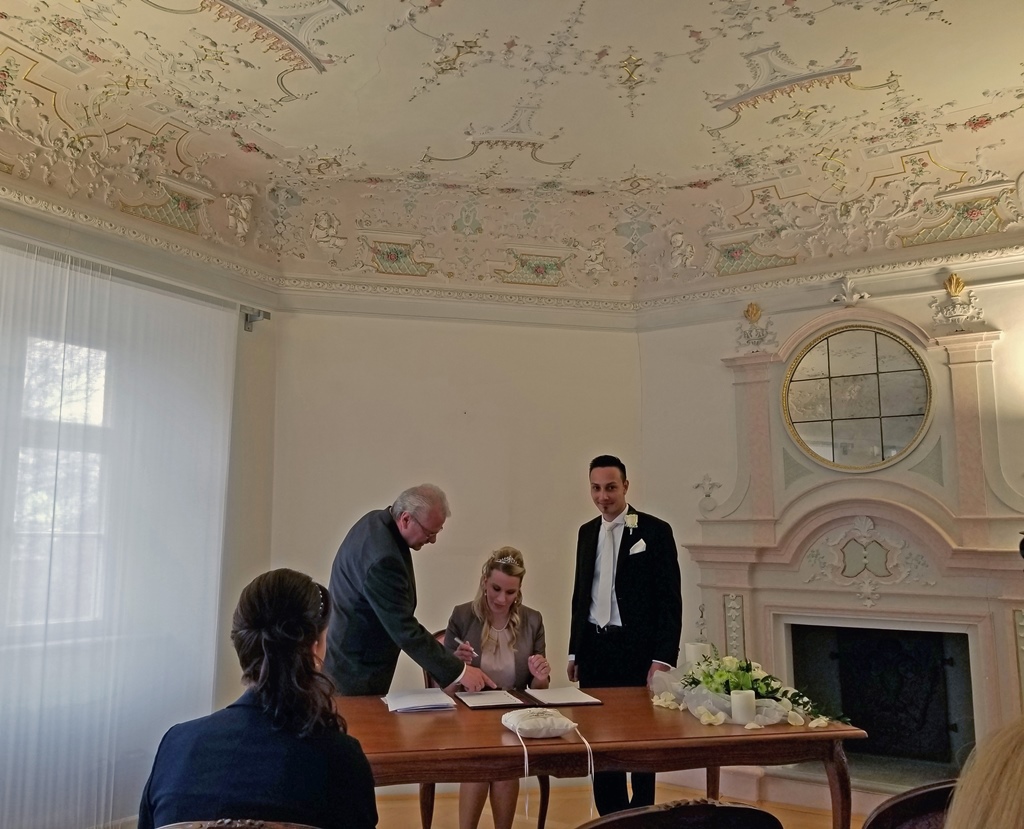
Anita "Signing Her Life Away"
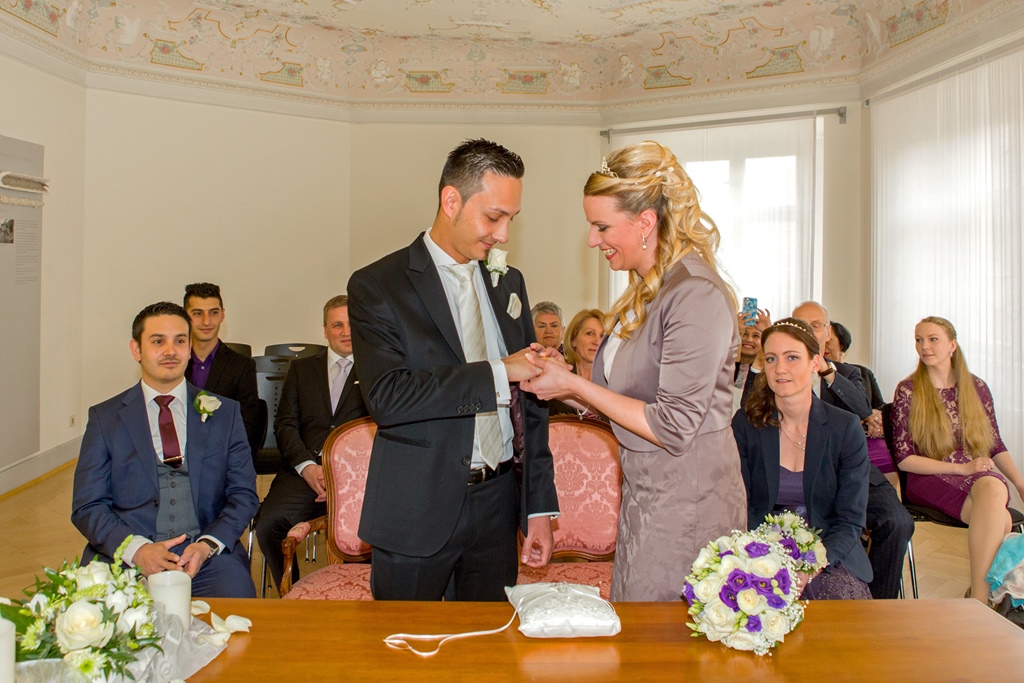
Ring Exchange
In the courtyard after the ceremony, Rainer’s brother Ralph and his wife Miriam (Ralph
was acting as Rainer’s Best Man) presided over an additional procedure, which involved
a large plastic sheet being transformed into a portal to matrimony. Hard to describe – just
watch the video:
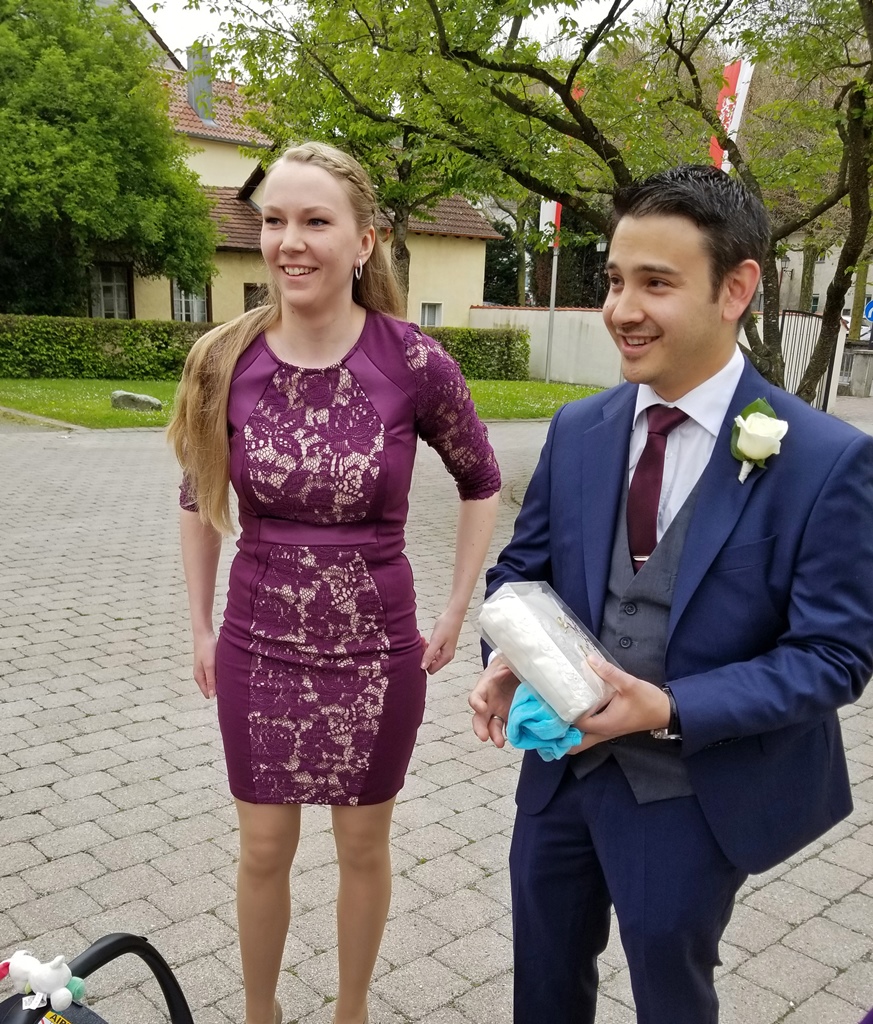
Miriam and Ralph

Slicing Through the Sheet
If I understand things correctly, Rainer and Anita were legally married at this point. But
we were just getting started. As soon as Rainer and Anita had successfully navigated the
giant heart, everyone got into their cars and we all headed to a restaurant for lunch. This
fortified everyone for the next event on the day’s itinerary. Baden-Württemberg may have
been satisfied that a marriage had taken place, but the Church had yet to weigh in. After a
break to allow everyone to collect their wits (and for some to make wardrobe changes), we
all headed to the local place of worship. And what a place it was!
There has been a monastery on top of the Martinsberg (a hill just east of central Weingarten)
since 1056, when Welf I, Duke of Bavaria, founded a monastery for the Benedictine order. In
the 12th Century, a Romanesque abbey church was constructed for the monastery, which seems to
have acquired the name “Weingarten” around the time work on the church began (the town was
known as Altdorf at the time). Over the next few centuries, the monks of Weingarten performed
a number of monkish duties, the most well-known being manuscript illumination. Between 1715
and 1724, the Romanesque church was demolished and replaced by a new one which was Baroque in
style. The plans for the new church were developed by Franz Beer as part of an ambitious plan
for the entire monastery complex. The overall plan was only partly completed, but the church
was largely finished by 1724 and is essentially the one seen today.
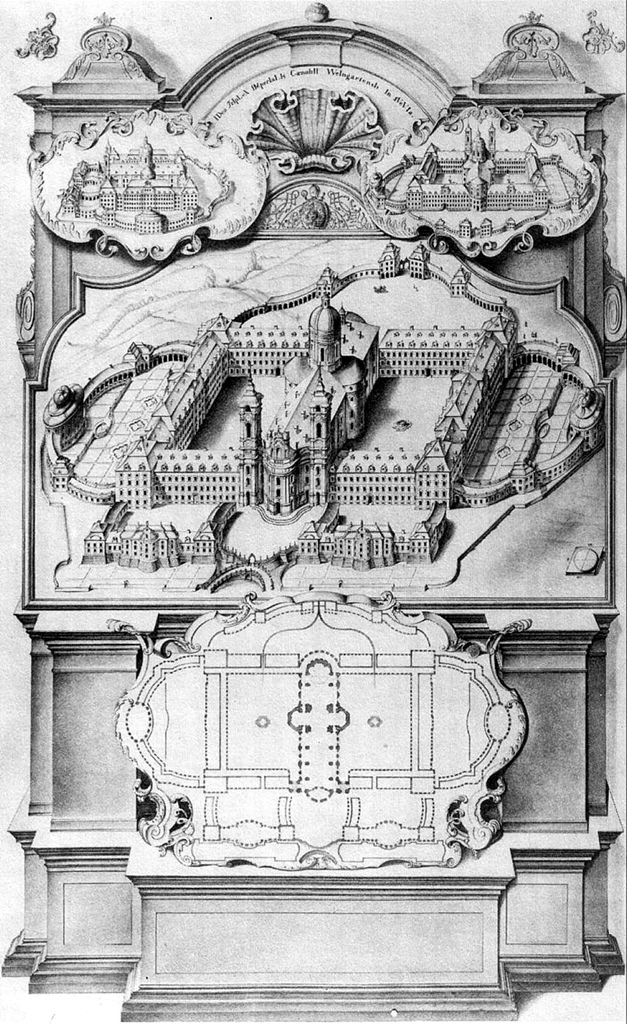
Plan for Weingarten Abbey, 1723
During a major restructuring of German territories in the early 19th Century, the abbey was
dissolved, and became the property of the Kingdom of Württemberg, and over the ensuing
century, the abbey rooms were used for a number of secular purposes. With the dissolution
of the Kingdom following World War I, an organization called the Beuronese Congregation
acquired the abbey, and Benedictine monks were returned to the property. They were evicted
by the Third Reich during World War II, but returned after the end of hostilities, with the
church becoming a papal minor basilica in 1956 (the source of its name; architecturally,
it's not a basilica at all). Since then, the population of monks at the abbey has dwindled,
and the rooms have largely been used for other purposes (such as education and housing of
refugees).
The Basilica was designed to be half the size of the immense St. Peter’s Basilica in Rome,
and is actually somewhat shorter than that, but 46% of a St. Peter’s is still immense, and
the Weingarten Basilica at 335 feet is the largest baroque church north of the Alps. A
unique kind of place to hold a wedding!
We parked behind the Basilica and made our way to the front by way of the north courtyard.
Besides the Basilica, the north courtyard is the only part of the abbey that was completed,
more or less, according to the original plan. One of the surrounding buildings had a
sundial on its face, whose shadow showed us that the time was just past 1:00, and sure
enough, when we consulted our watches, we could see that it was … 2:37. Probably a
rounding error.
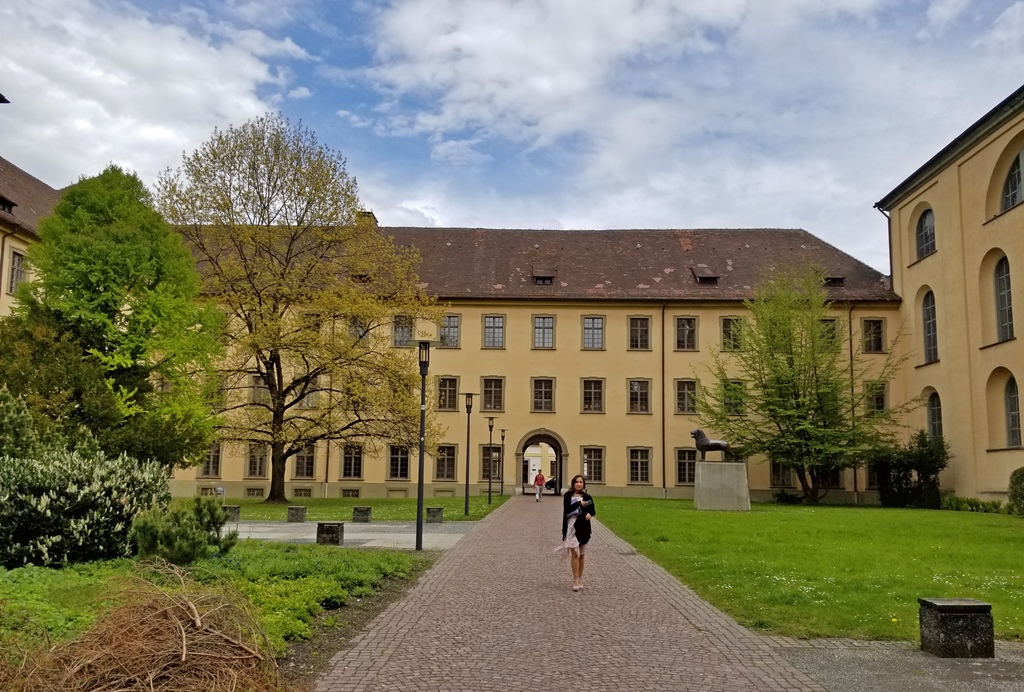
Connie in Abbey Courtyard
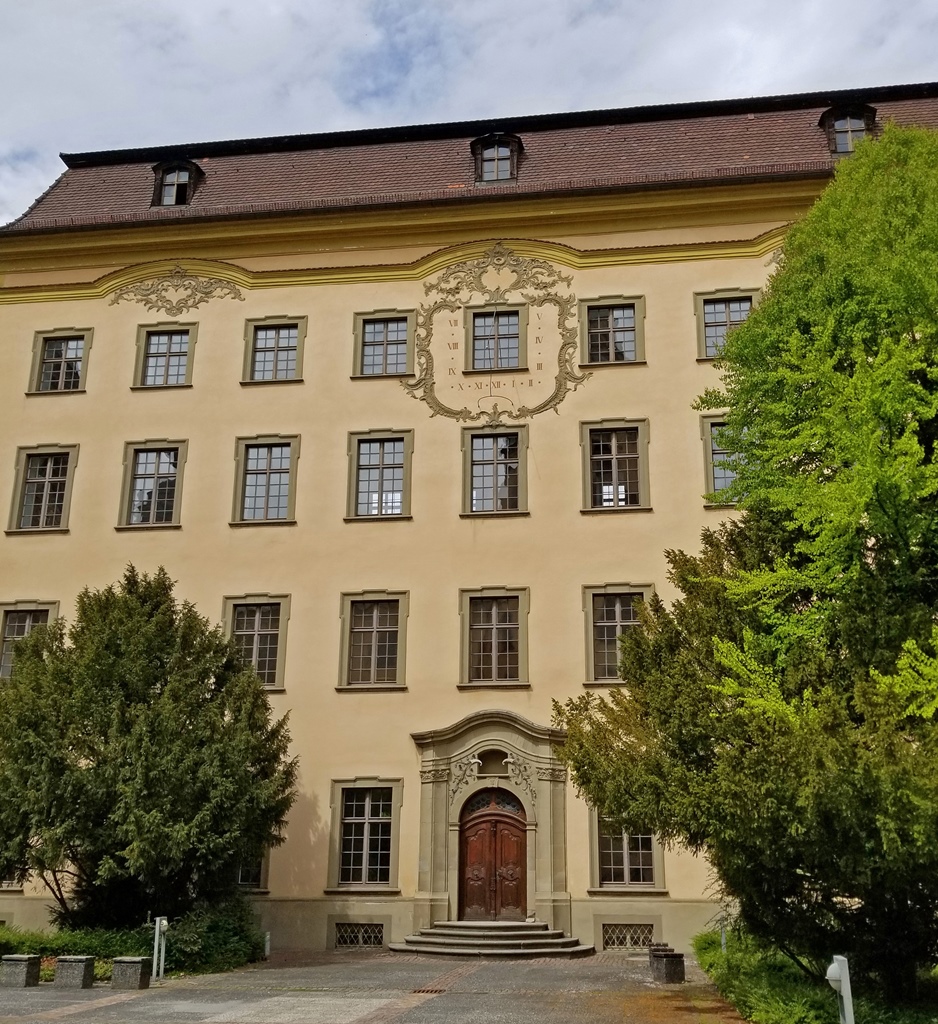
Abbey Building with Sundial
The front of the Basilica was as imposing as expected, with the drama being heightened by
some threatening clouds. Looking towards Weingarten’s Old Town, we had a view of its
rooftops, as we were on top of the Martinsberg hill.
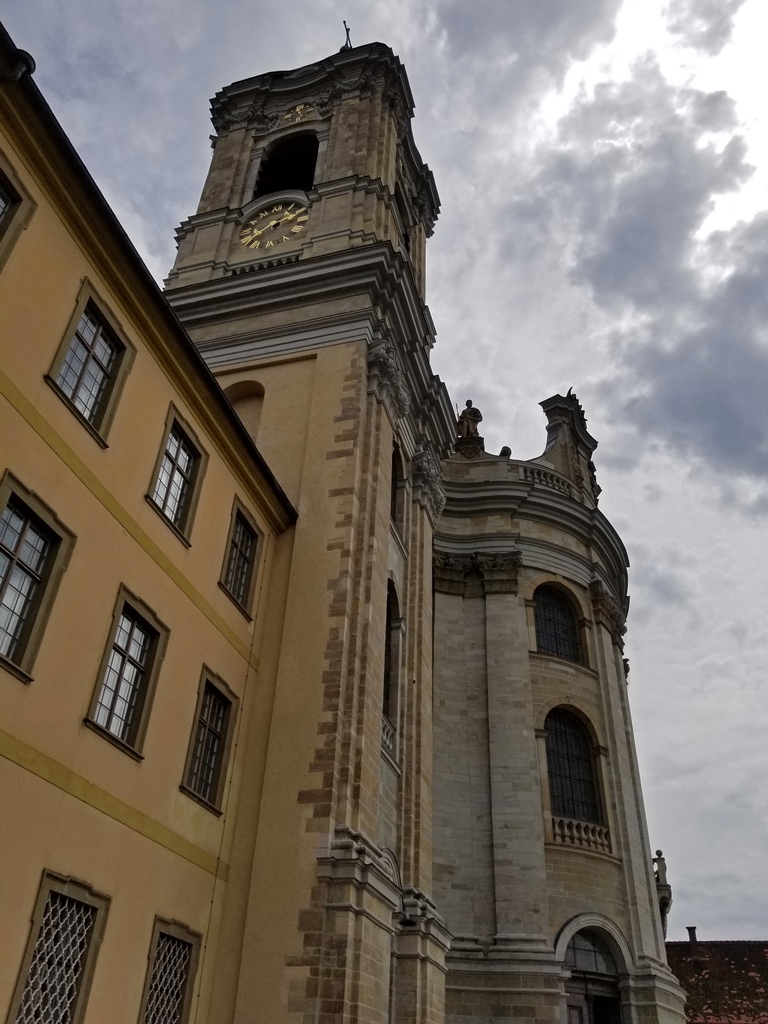
Clock Tower and Clouds
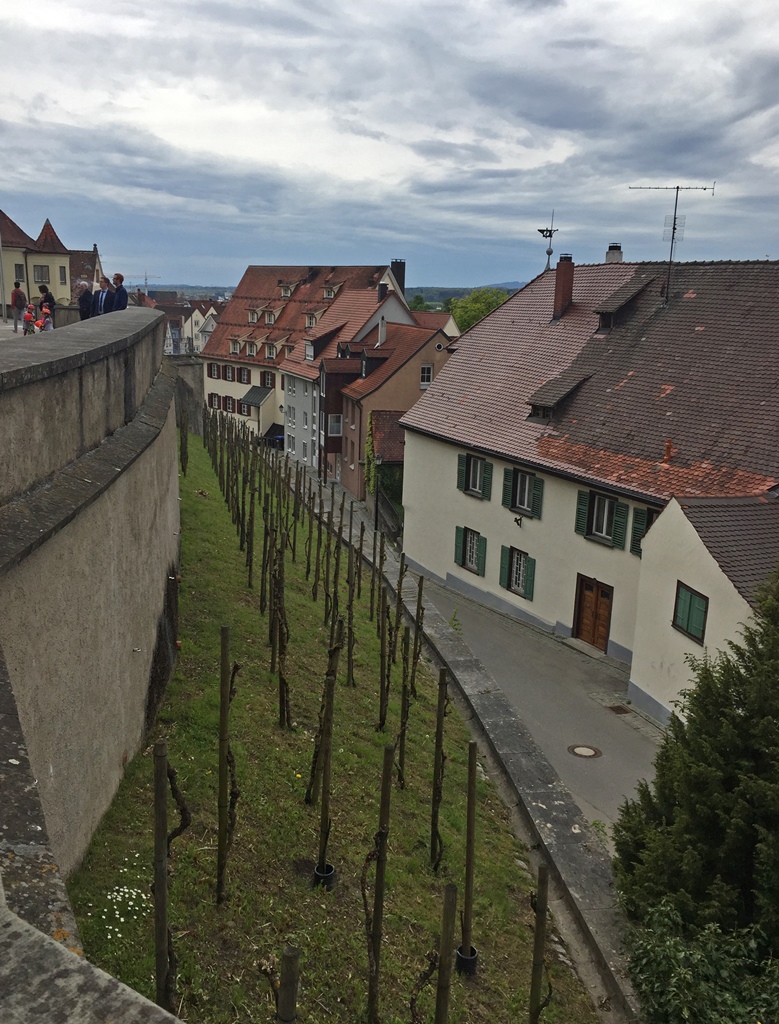
Weingarten from Basilica
We entered the church, and were immediately impressed by its vast interior. We were
early for the ceremony, so we took time to note some of the Basilica’s Baroque features.
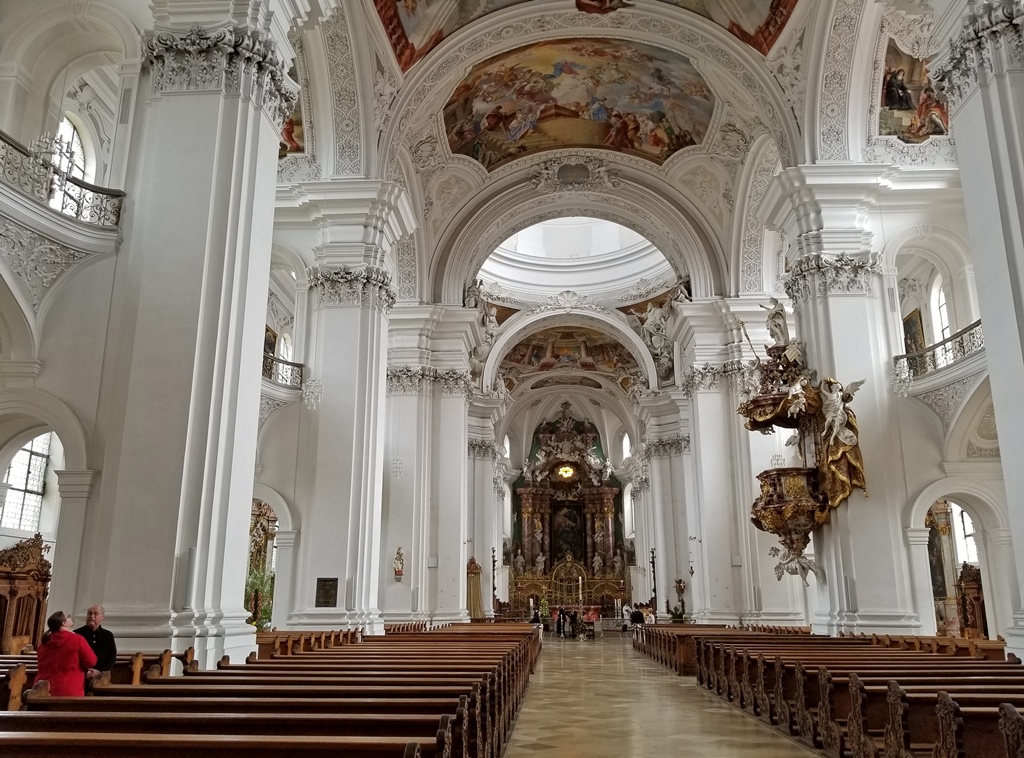
Inside the Basilica
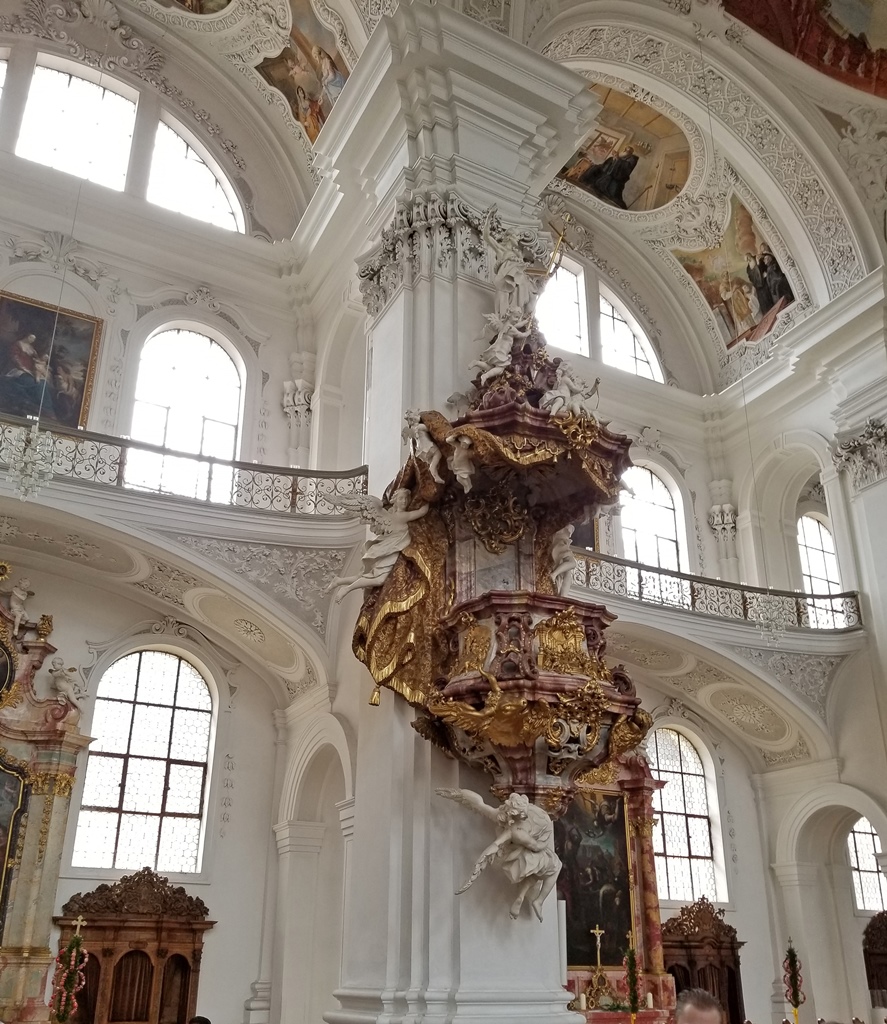
Pulpit
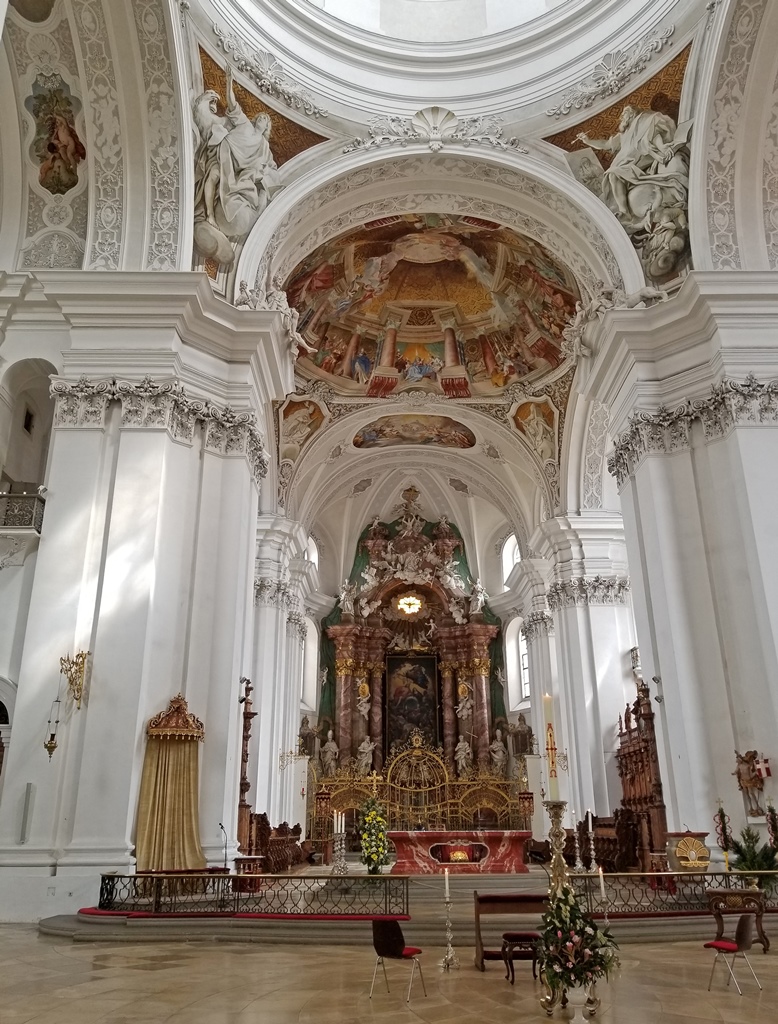
Main Altar
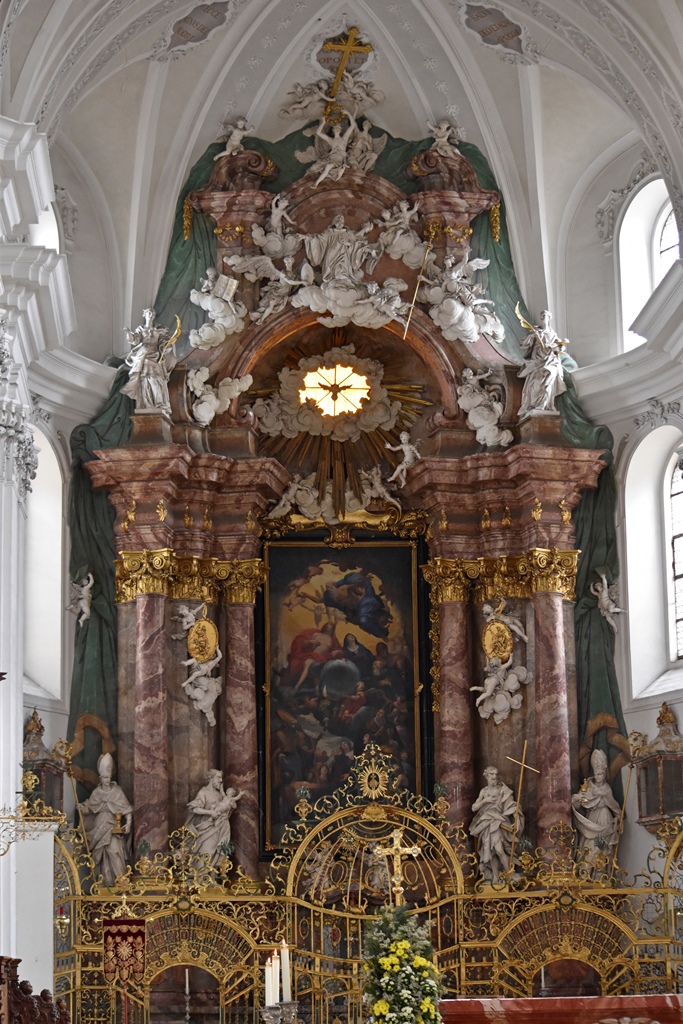
Main Altar
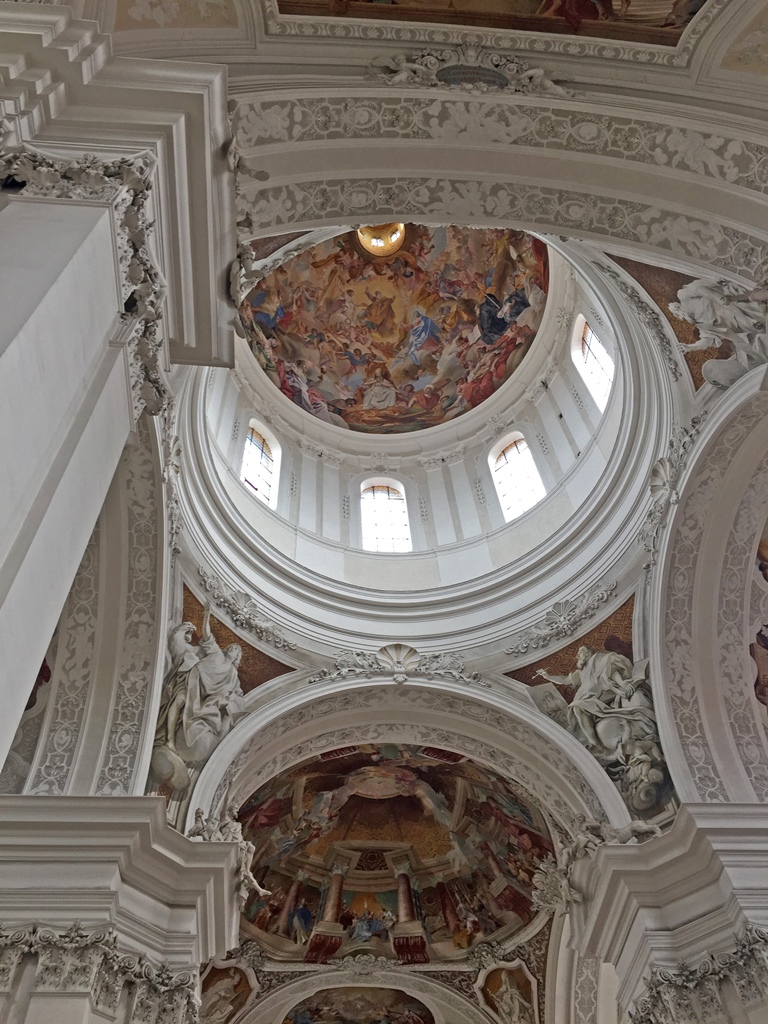
Dome
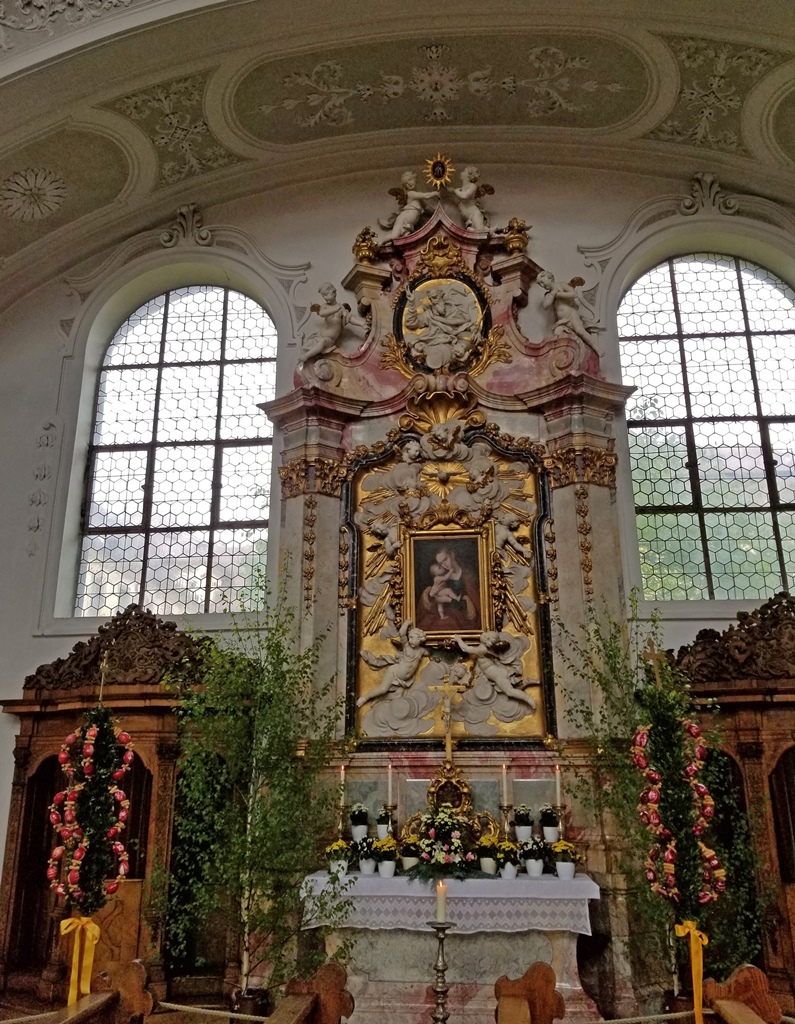
Side Altar
The ceiling frescoes were done by the famed German painter and architect Cosmas Samian
Asam. Cosmas sometimes worked with his brother Egid Quirin, but apparently he worked solo
on this project. We’ll have more on the Asam brothers when we get to Munich.
Ceiling Frescoes
The church’s main organ was built between 1737 and 1750 by Joseph Gabler and has gone
through a number of restorations. The most recent restoration, in 1981-83, was intended
to return the organ as closely as possible to its original state. The organ has 63 stops
and 6890 pipes, and is famous for its Vox Humana (human voice simulation)
capabilities. It’s apparently difficult to play, as all of its action is mechanical, and
a fair amount of force is required from the player for each note. One of the requirements
for the organ’s design was that the pipes not block light from entering the church, and
Gabler appears to have done a good job of this.
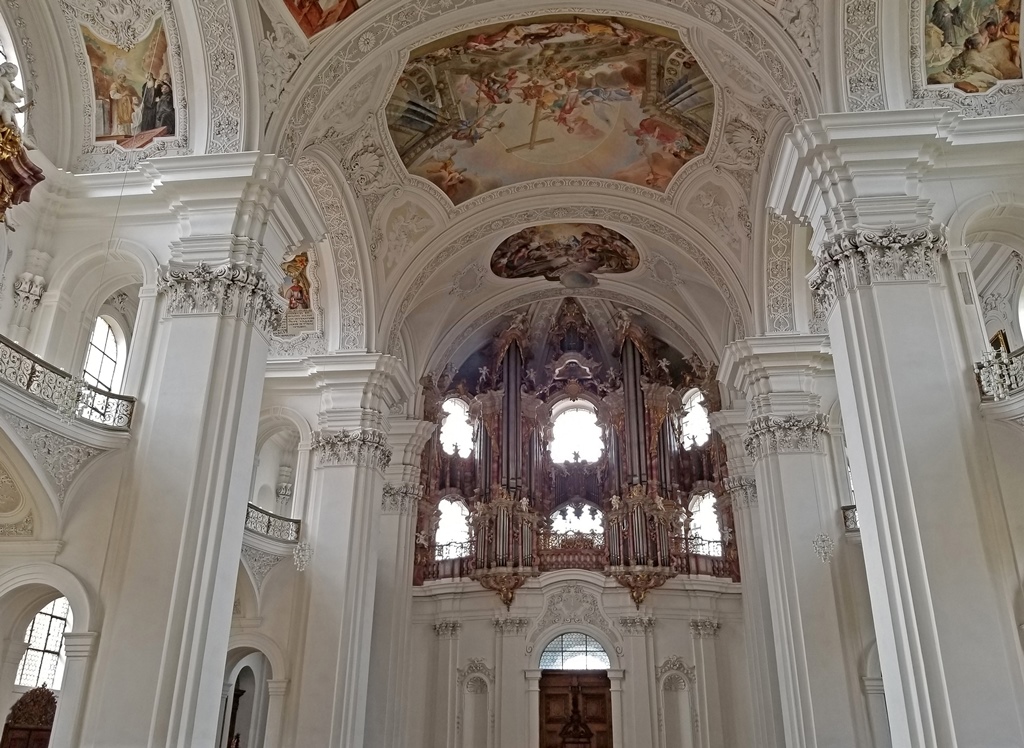
Church Organ
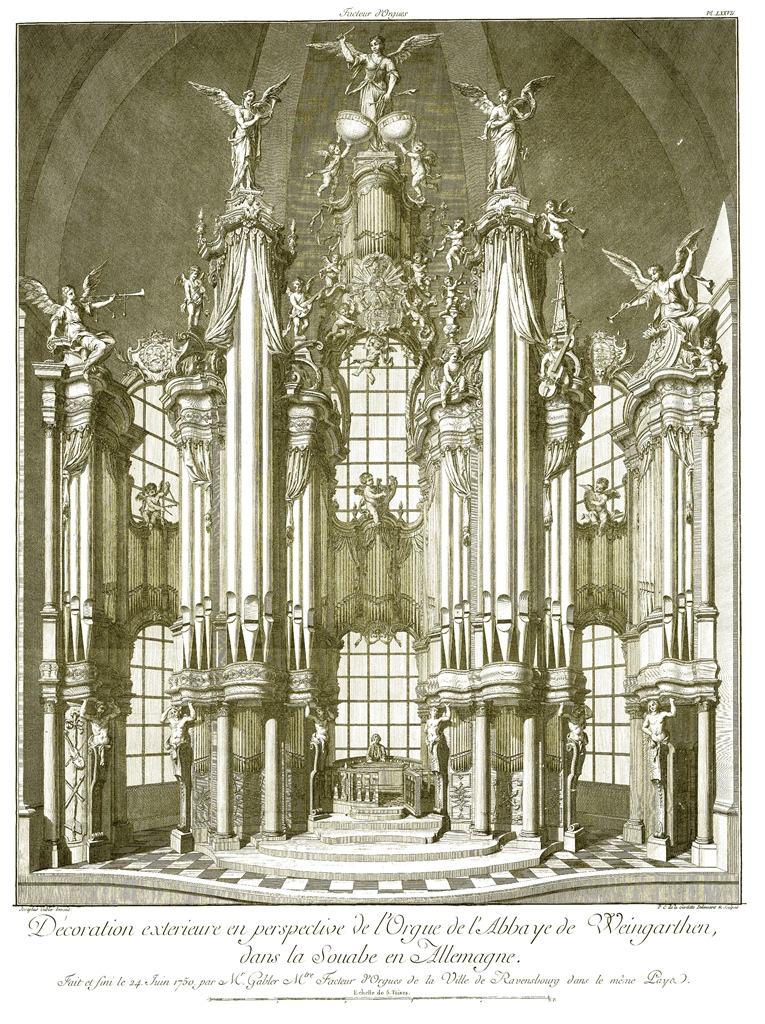
1766 Engraving of Organ
Like any great Catholic church, the Basilica has a prestigious relic, this being a small
amount of the blood of Jesus. According to tradition, the blood (actually blood-soaked
earth, from the foot of the cross) was collected by Longinus, the soldier who pierced
Jesus’s side with a lance. He placed it in a leaden box and buried it in Mantua, Italy
(presumably to protect it from the Roman authorities). It was discovered centuries later,
in 804, and exalted by Pope Leo III, but was again buried during the Hungarian and Norman
invasions. It was rediscovered in 1048 and re-exalted, this time by Pope Leo IX, and was
divided into three parts, one of which went to Holy Roman Emperor Henry III. Henry
bequeathed the relic to Baldwin V, Count of Flanders, who gave it to his daughter, named
Juditha. Juditha married the above-mentioned Welf I, Duke of Bavaria and founder of the
Weingarten monastery, and the rest is history, as if there hadn’t been enough of that
already. The presentation of the relic took place in 1090, on the Friday after the Feast
of Ascension, and an annual procession known as the Blutritt (blood ride) has
taken place every year since, on that day (except for a 37-year gap in the 19th Century).
When not riding around Weingarten, the relic is displayed in a reliquary which looks like
a gold-decorated red pillow, in a windowed marble table under the Basilica’s main altar.
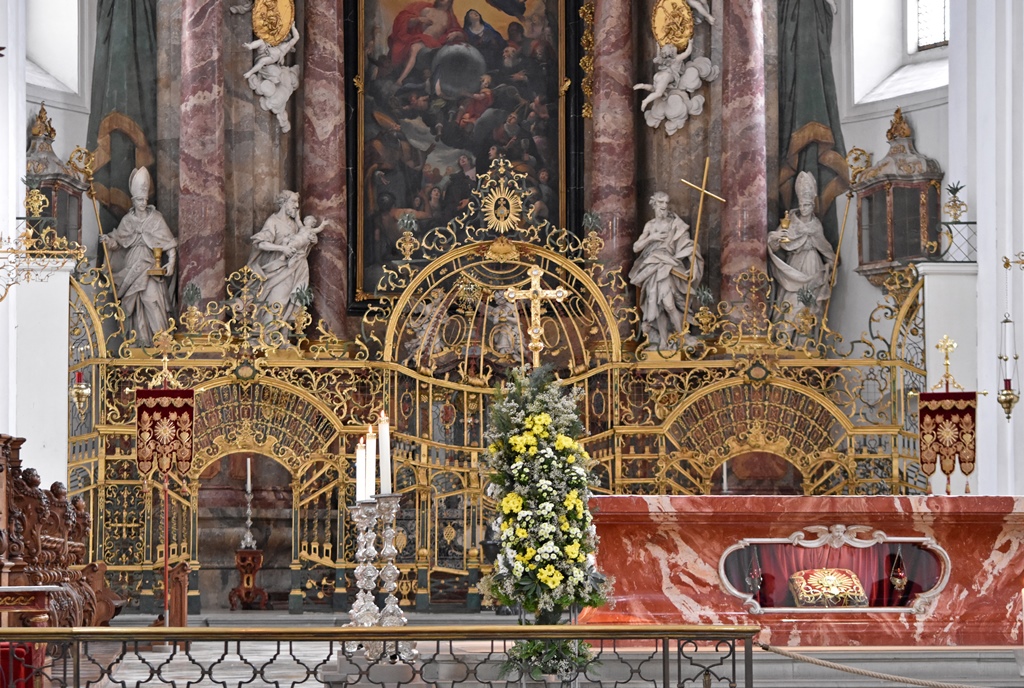
Main Altar with Holy Blood
Which brings us to Rainer, standing up near the altar, waiting for something to happen.
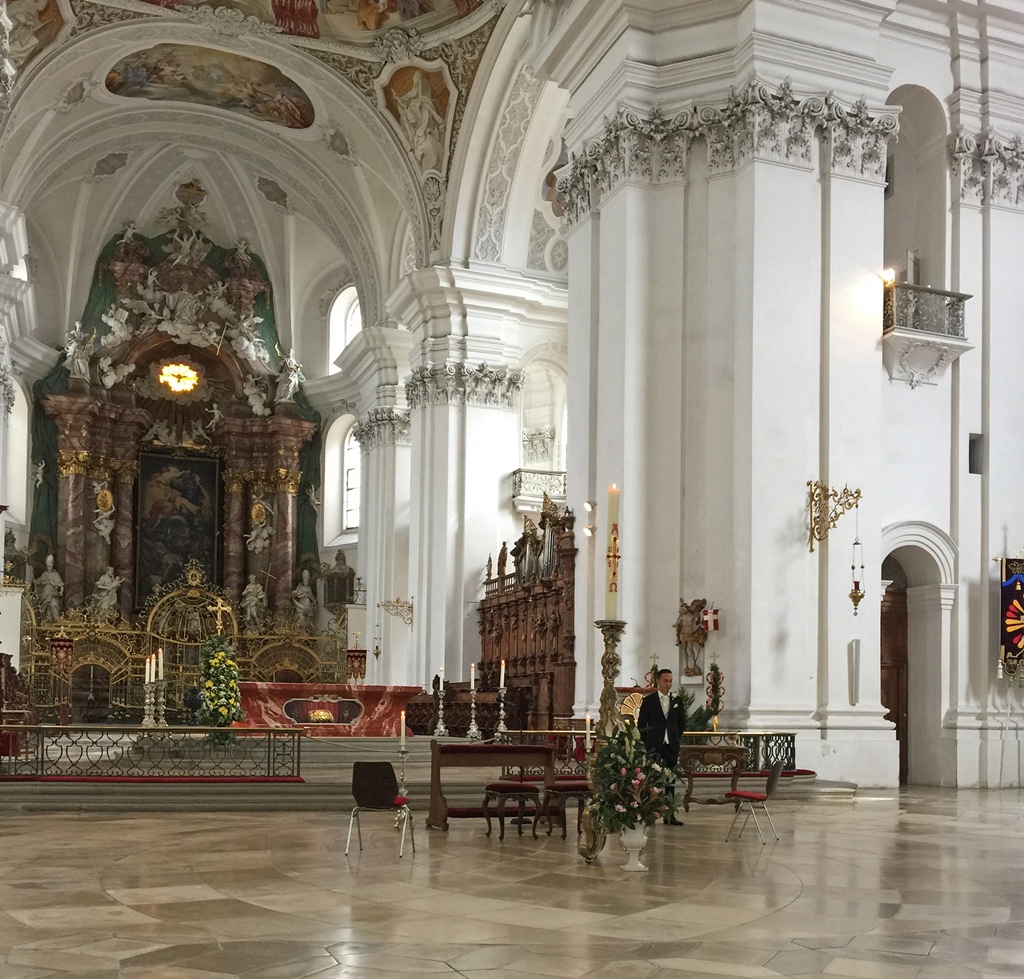
Rainer and Main Altar
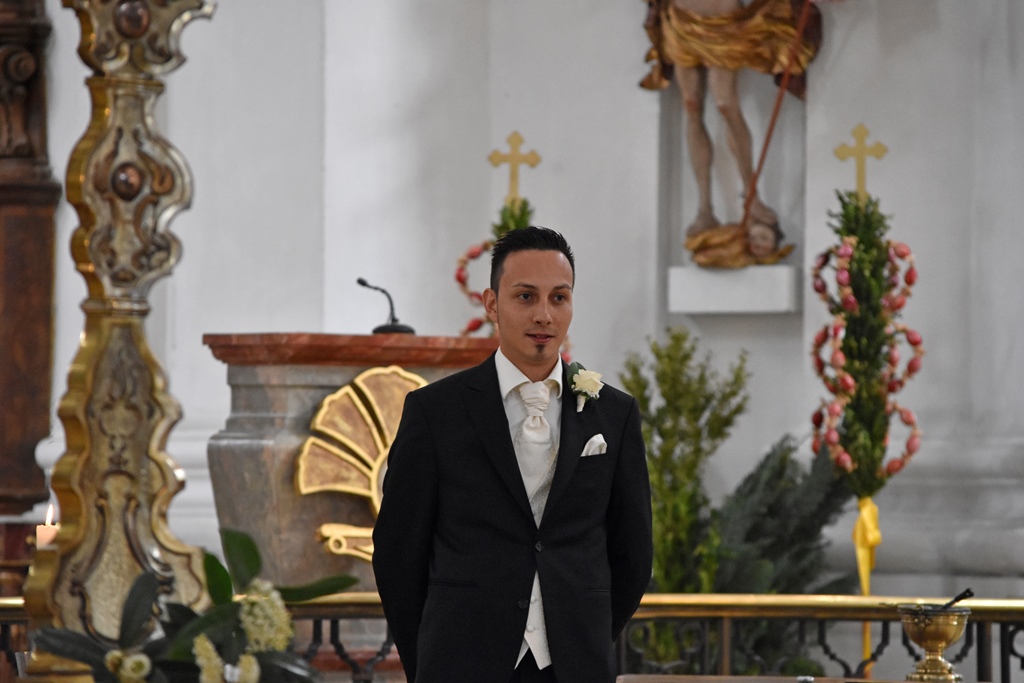
Rainer
As Rainer waited, guests were arriving and filling the pews toward the front. I’m not
sure how many guests there were, but there were many more than there’d been at the Schlössle.
Not nearly enough to fill up the Basilica, though (this might have taken the whole city). I
won’t cover the ceremony in great detail - it was beautiful and commenced at the appointed
hour and followed much the same procedures as Catholic weddings all over the world (except in
German). But here are a few highlights:
Processional

A Song!

All Done
With the ceremony concluded, everyone left the church and congregated outside, for
photos and greetings.
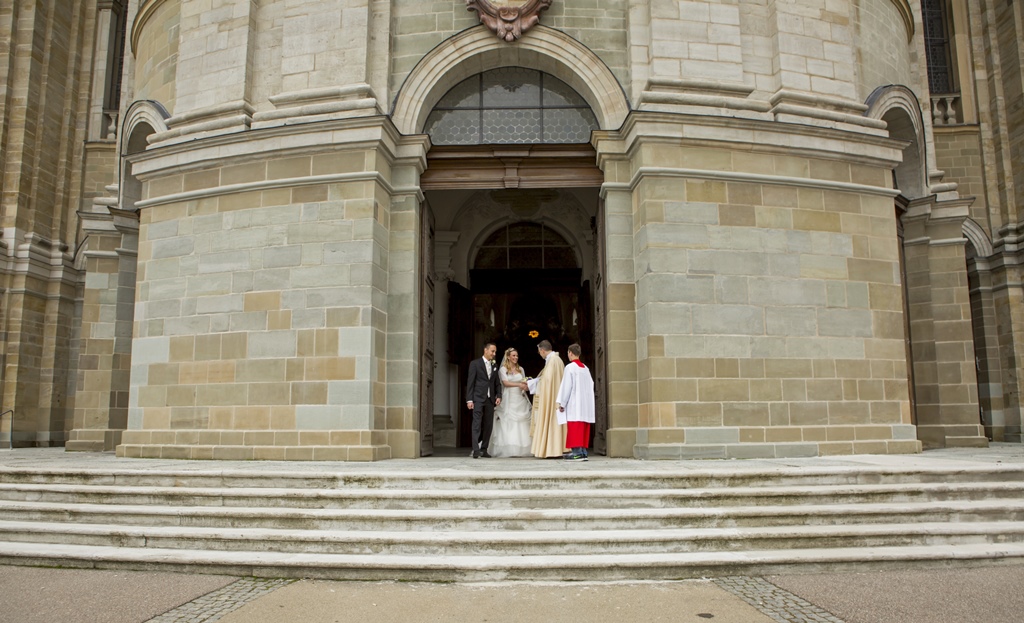
Leaving the Church

Outside the Church
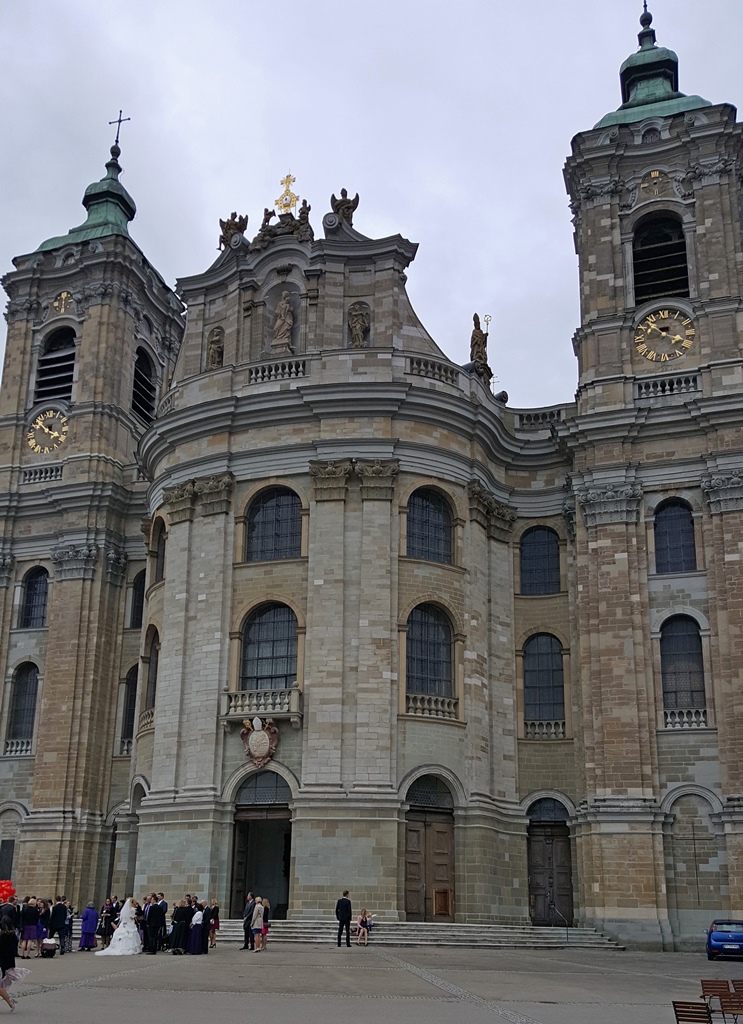
Basilica
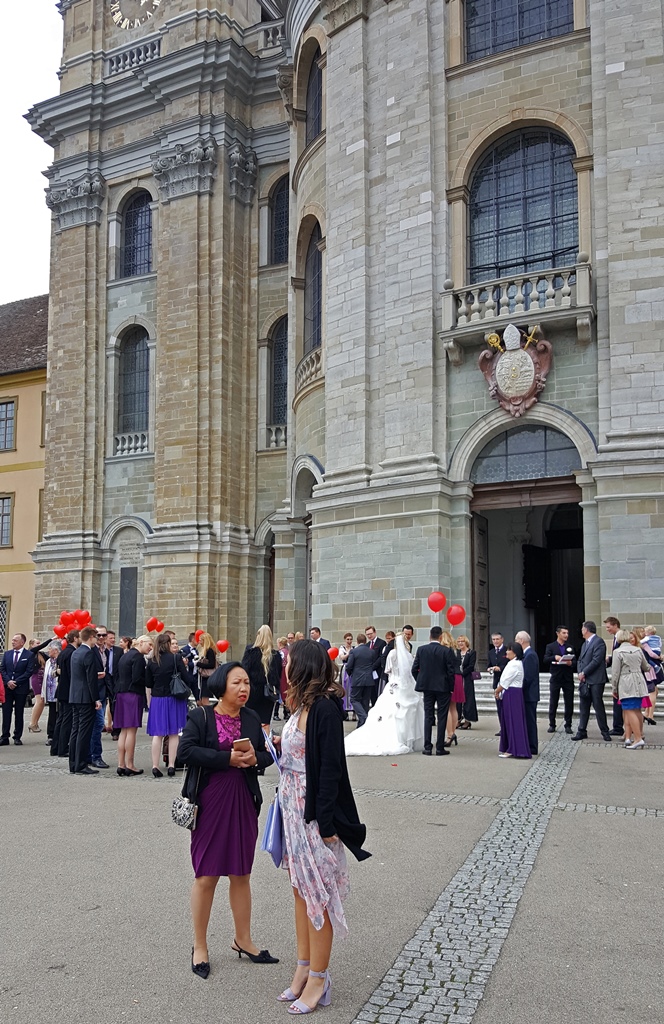
Nella and Connie and Guests
For additional fun, there were bubbles and a balloon release.
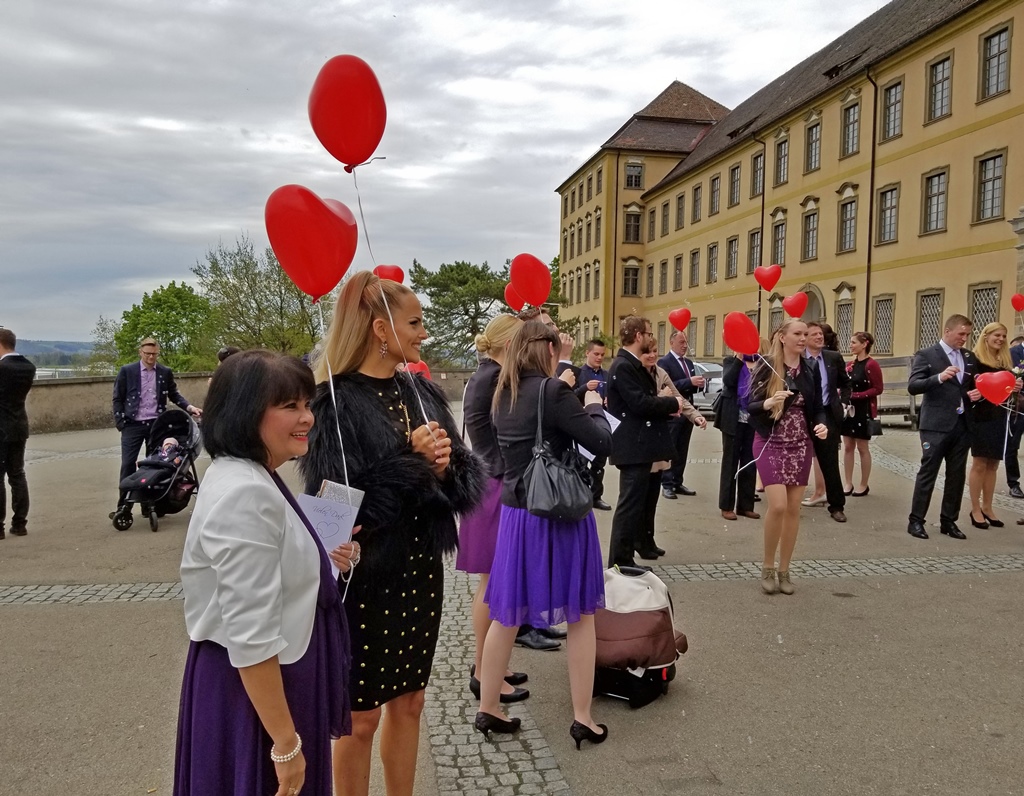
Guests with Balloons
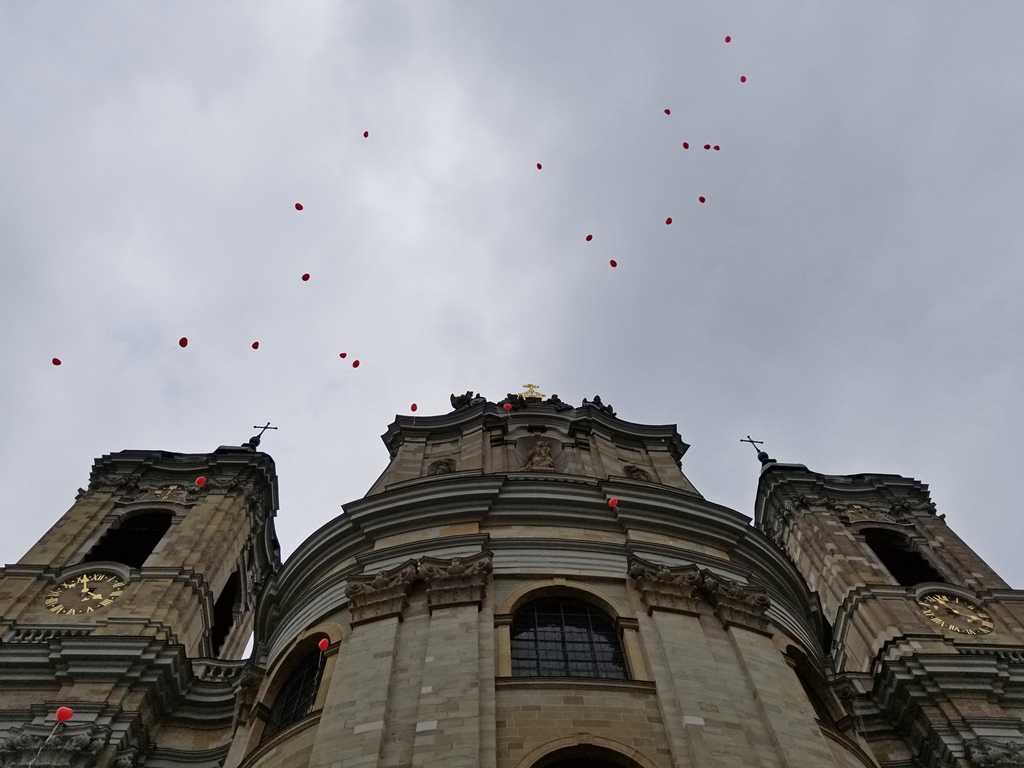
Released Balloons
Family and Bubbles
Then the bells started. This may have been a signal that it was time to leave. And it
was. There was a party to be started.

Bells Ringing
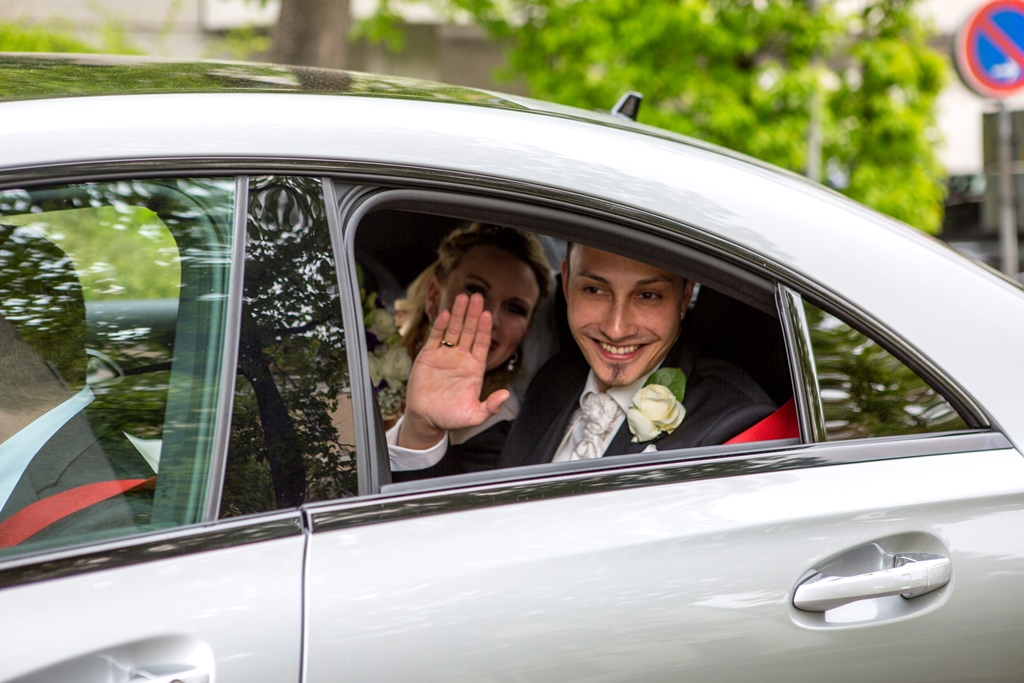
Heading for Reception
In Lindau. Lindau is a city of 25,000 at the east end of the Bodensee, located in an
appendage of the oddly-shaped state of Bavaria. It’s about 35 minutes from Weingarten,
so all of the guests (including us) loaded themselves into appropriate vehicles and
headed south. Eventually we all converged on the Hotel Bad Schachen, on the shore of
the Bodensee. No, this isn’t a case of startling humility, and there isn’t any Hotel
Good Schachen anywhere. “Bad” is a word that refers to bathing, and in the summer, this
is one of the many activities to be enjoyed in the area. But not so much on the day of
our visit. First of all, we weren’t exactly dressed for it, and second, the weather was
threatening, and it would be raining with authority before the evening was over. But
before the cats and dogs started to fall, we had a chance to give the hotel and its
surroundings a pretty good look from the outside, and it was clear that this would be a
glorious place to stay in weather that was sunnier and warmer.
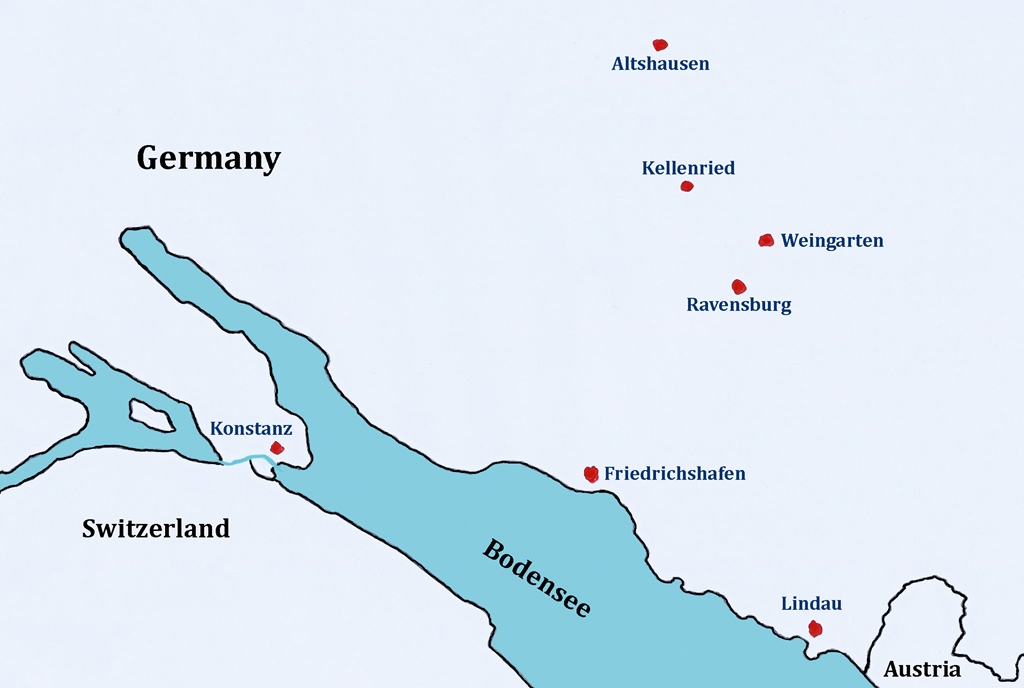
Bodensee North Shore
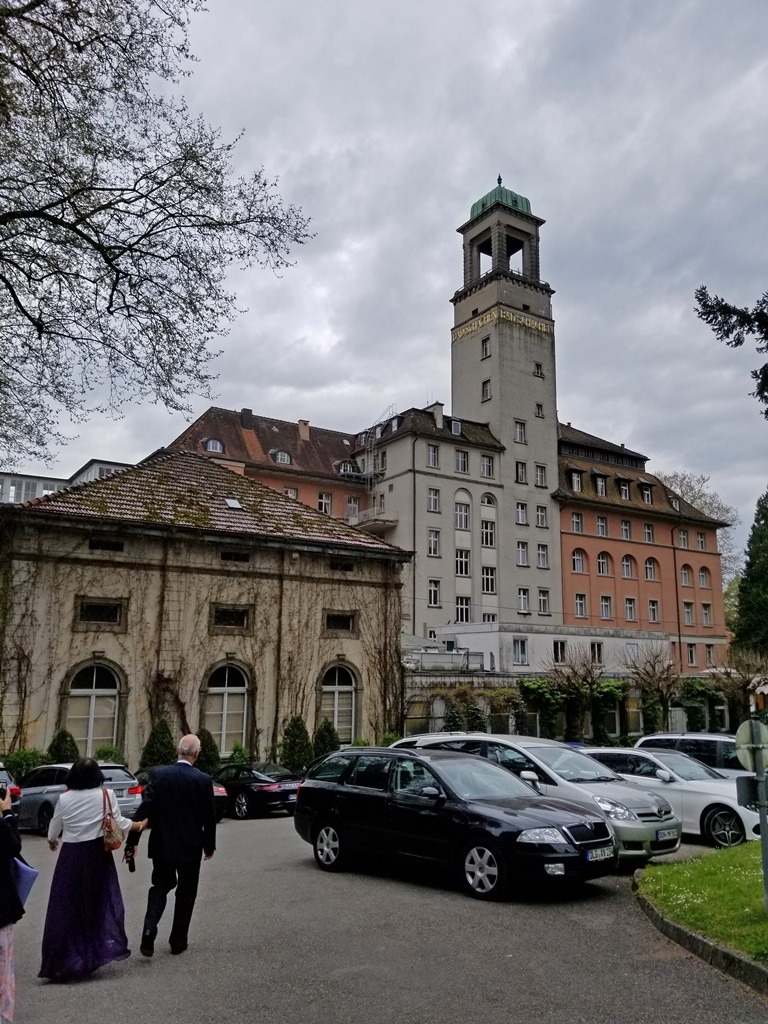
Hotel Bad Schachen, Lindau
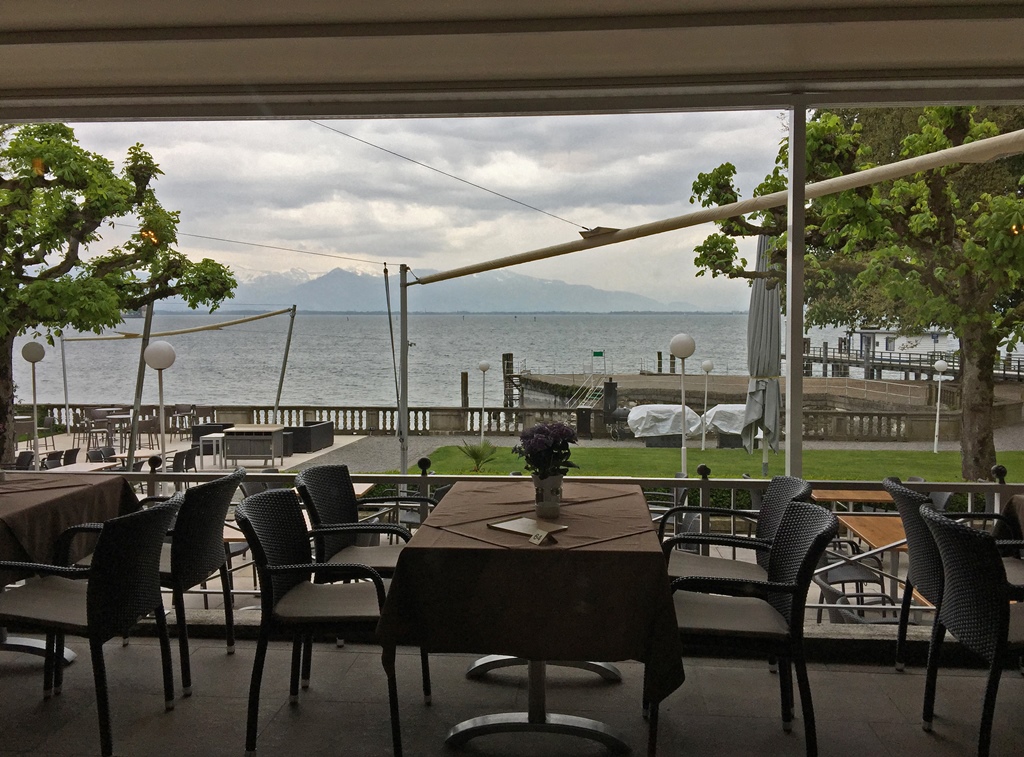
Bodensee from Hotel Bad Schachen
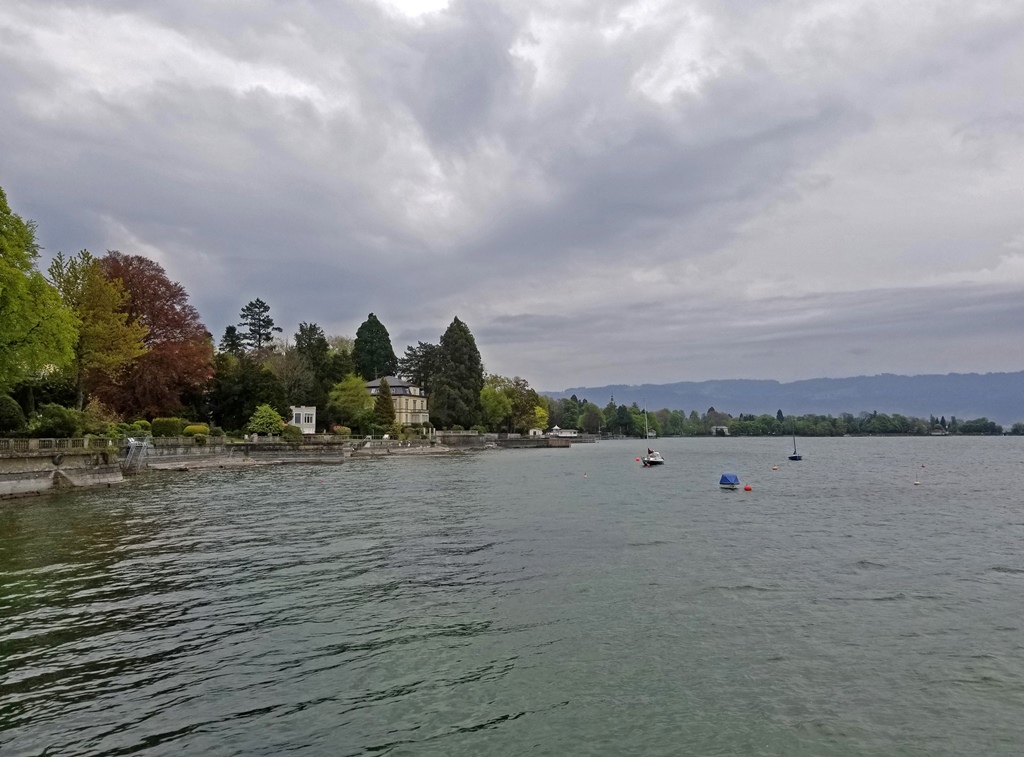
Lakeshore near Hotel Bad Schachen
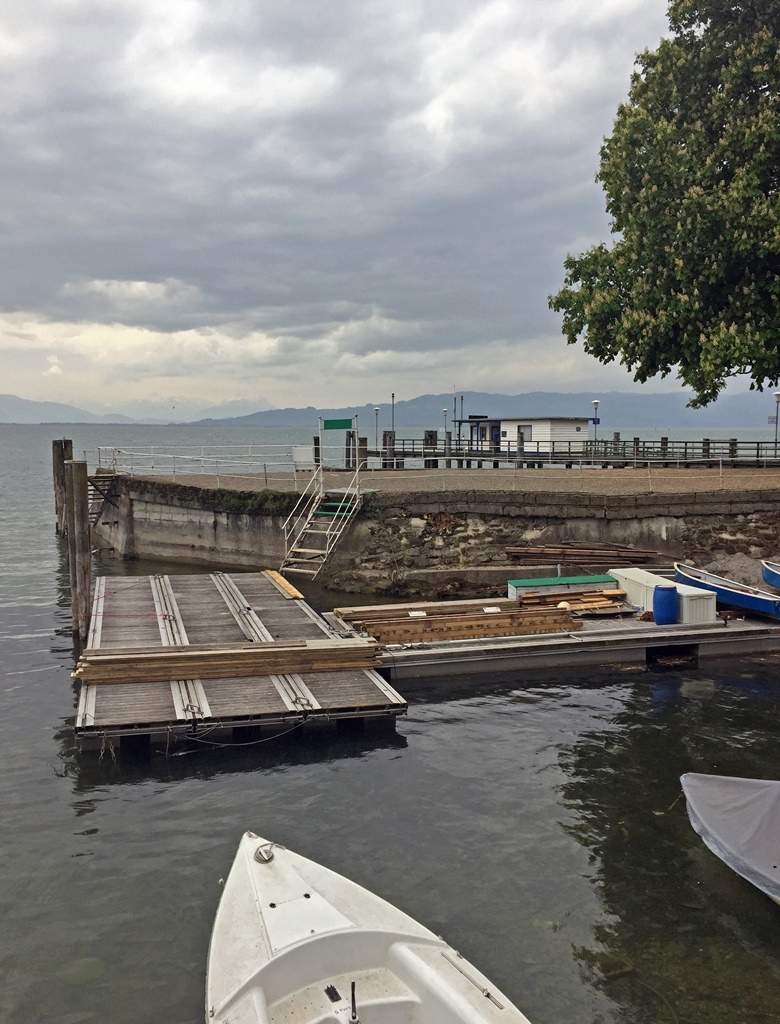
Pier at Hotel Bad Schachen
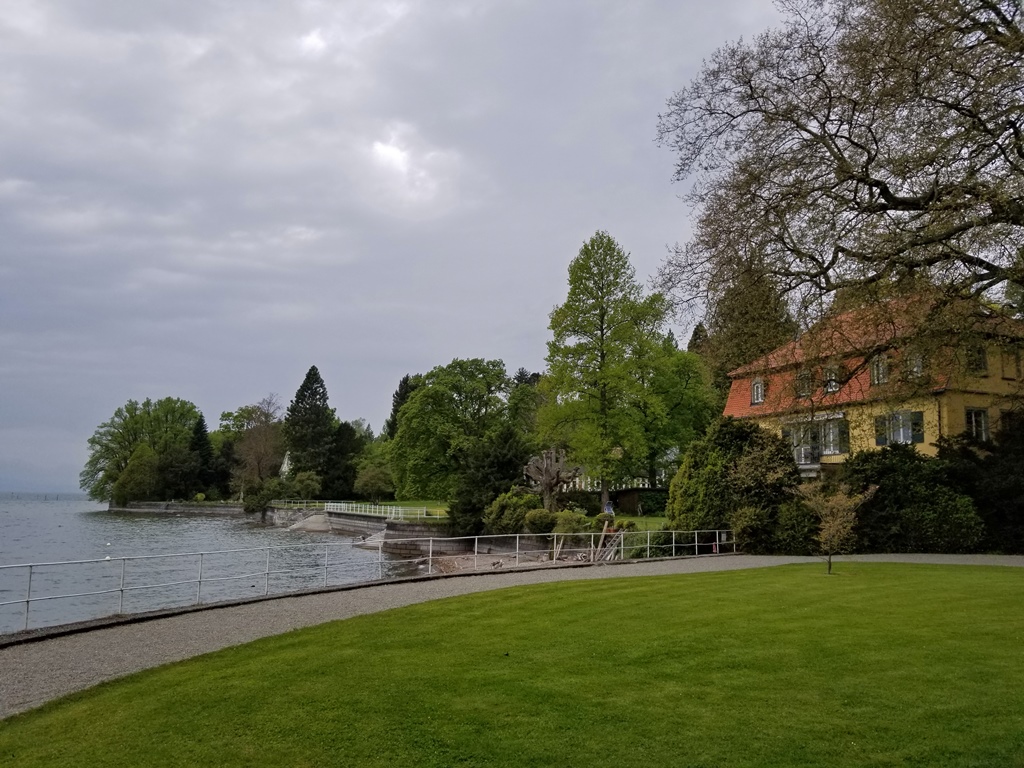
Lakeshore near Hotel Bad Schachen
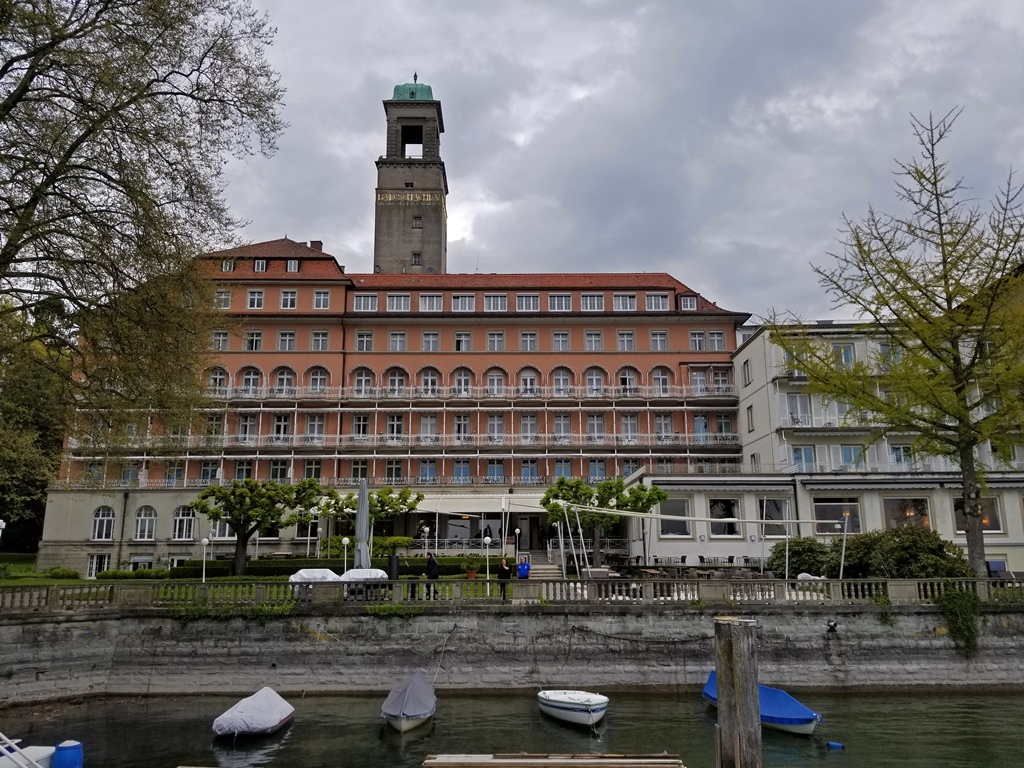
Hotel Bad Schachen
Things inside the hotel were very nice too. To somebody coming from a country where
someone running a hot dog stand that was started by a parent qualifies as a “family
business”, the Hotel Bad Schachen seems positively dynastic, having been run by the
same family since 1752 (seven generations, going on eight). And they didn’t survive
this long by giving poor service. A ballroom had been secured, and it was decorated
beautifully. And dinner was wonderful, when the time came. There were heartfelt
speeches and toasts (which we didn’t understand), some cute kids sang a song, and
there were reception rituals involving cutting things and throwing things which were
pretty much the same as seen in wedding receptions in the U.S.
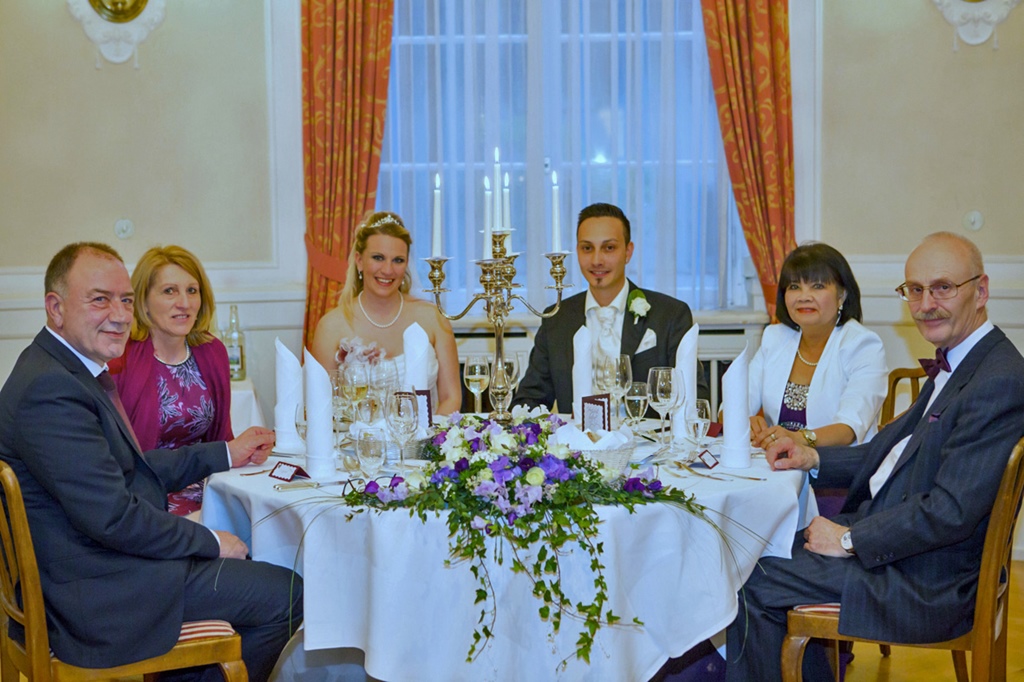
Bride and Groom with Parents
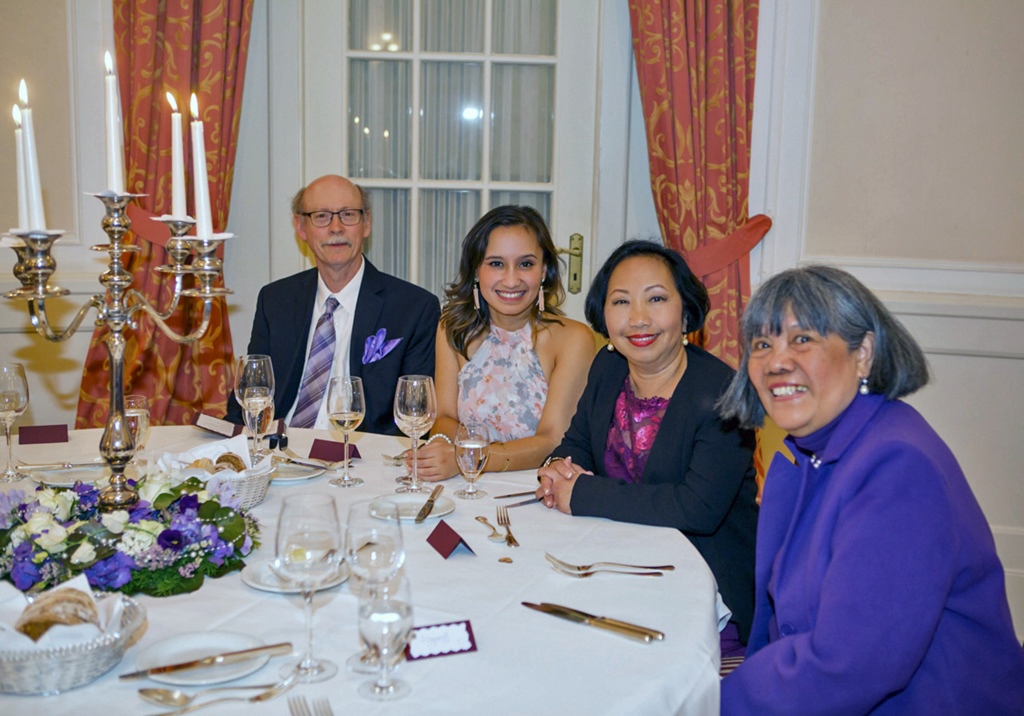
Us with Margi (Nila's Sister)
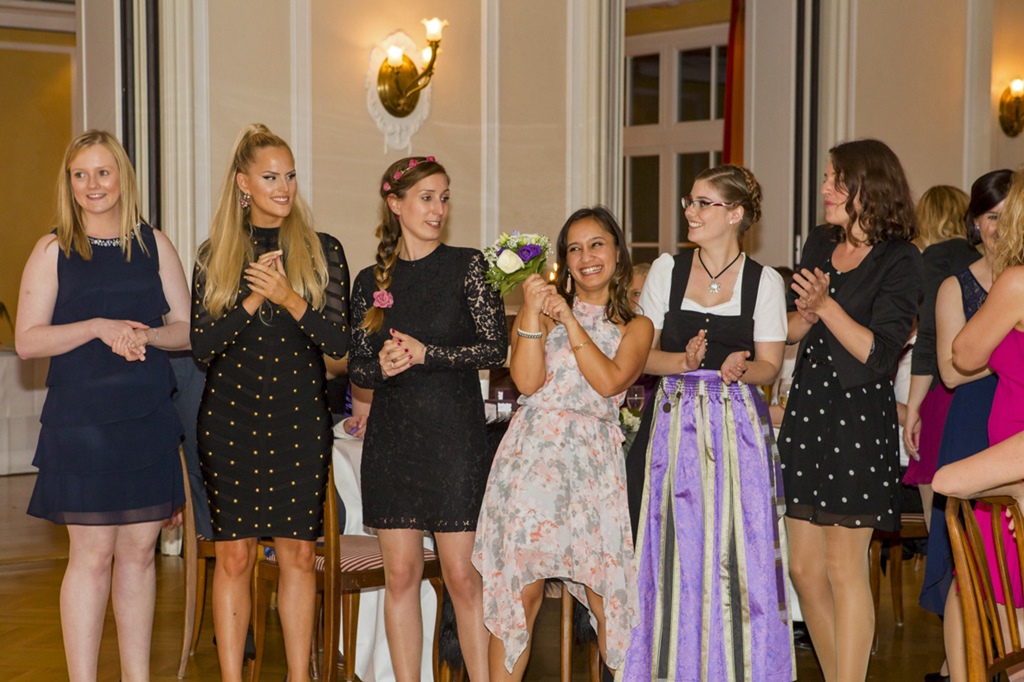
Connie Triumphant
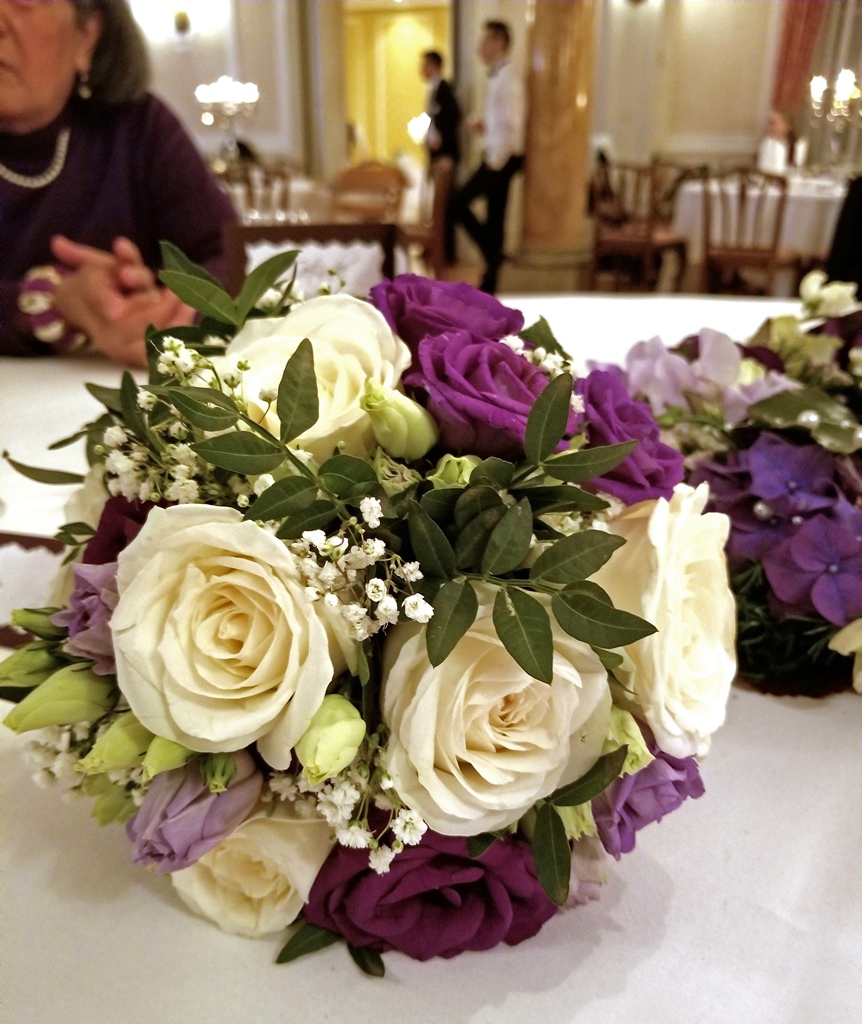
Flowers
In the end, the reception lasted longer than we did. It had been a long day, and we
were still feeling some of the effects of jetlag, so when we felt ourselves starting to
drift off, we made our farewells and found our way back to the nearby motel where we’d
registered earlier (fortunately the rain had mostly let up by this time) for some
much-needed rest. And as usual, we already had plans for the next day. First, we would
pay a visit to the city of Ulm.


